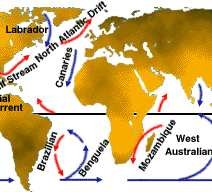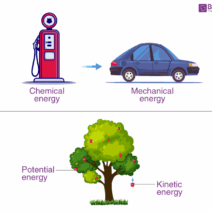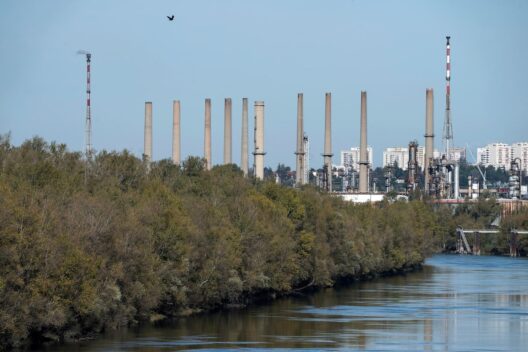Energy conservation within an ecosystem is a pivotal concept that encapsulates the intricate interactions between various biotic and abiotic components. Understanding how energy flows and is transformed provides insight into ecological dynamics and the sustainability of these systems. This exploration delves into the mechanisms of energy flow, the principles of thermodynamics as they pertain to ecosystems, the roles of producers, consumers, and decomposers, as well as the implications for conservation efforts.
Fundamentally, energy does not vanish as it traverses through an ecosystem; instead, it transfigures, following the laws of thermodynamics. The first law of thermodynamics, often referred to as the law of energy conservation, posits that energy cannot be created or destroyed. Instead, it can merely metamorphose from one form to another. This principle is integral to understanding energy flow within ecological frameworks.
The primary source of energy in most ecosystems is sunlight, which is harnessed by autotrophs through the process of photosynthesis. Autotrophs, such as plants, algae, and certain bacteria, convert solar energy into chemical energy stored in the form of glucose. This transformation is not wholly efficient; typically, only about 1-2% of sunlight is captured and converted into biomass. The remainder is lost as heat, illustrating the second law of thermodynamics, which states that in any energy transfer, some energy becomes unavailable for work. This entropy is a crucial aspect to consider when evaluating energy dynamics within ecosystems.
Once energy is captured by autotrophs, it forms the basis of food webs, cascading through various trophic levels. Herbivores, or primary consumers, obtain energy by consuming plant matter. This transfer is accompanied by another loss of energy, usually quantified at approximately 10% of the energy available from the previous trophic level. The inefficiency of energy transfer at each step illustrates the limitations of energy conservation as it flows through the system. Only a fraction of the energy consumed by herbivores is converted into growth or reproduction, with the majority dissipating as metabolic heat.
Moreover, secondary consumers, or carnivores that consume herbivores, further exacerbate this loss. The energy transferred from primary to secondary consumers follows the same 10% rule, signifying that energy diminishes with each ascending trophic level. This phenomenon has implications for ecosystem structure. Food webs are typically pyramidal; the biomass and energy available decrease considerably at higher trophic levels, leading to fewer organisms that can be supported. For instance, a vast biomass of plants can sustain a comparatively small number of herbivores, which in turn can support even fewer carnivores. Thus, the flow of energy delineates the distribution and abundance of species within an ecosystem.
Decomposers play an indispensable role in the cycle of energy and matter within ecosystems. Comprising fungi, bacteria, and detritivores, they facilitate the breakdown of organic material. This process releases nutrients back into the soil, which can then be utilized by plants, thereby completing the cycle. While decomposers consume energy, they too lose a significant portion to heat through metabolic processes. Nonetheless, their activity is vital for maintaining the flow of energy and recycling nutrients within the ecosystem.
A critical inquiry arises: Can energy be considered “conserved” if it is constantly transforming and losing efficacy as it moves through trophic levels? While the total energy remains constant in the ecosystem, its usability diminishes. Therefore, while energy conservation in the strictest sense implies the immutability of energy quantity, in ecological contexts, it refers more to the persistence of energy flow and its cyclical nature rather than its effective usability for biological work.
An understanding of these energy dynamics is not merely academic; it has profound implications for conservation practices. Preserving ecosystems means recognizing the importance of energy flow in maintaining biodiversity and ecological balance. Habitats that are altered or degraded often result in disrupted energy pathways, leading to species decline and ecosystem collapse. Conservation strategies must, therefore, focus on protecting the integrity of these energy transfers and the diversity of species that facilitate them.
Moreover, climate change presents a formidable challenge. As global temperatures rise, the efficiency of energy transfer within ecosystems may be compromised. Altered precipitation patterns and increased temperatures can affect plant growth, reduce photosynthetic efficiency, and subsequently diminish the energy base for entire food webs. Thus, the cascading repercussions of climate change threaten not only individual species but the very essence of energy conservation within ecosystems.
In conclusion, while energy is conserved in totality as it flows through ecosystems, its utility diminishes at each trophic level. This understanding underscores the necessity for vigilant conservation efforts to protect the intricate webs of life and the energy dynamics that sustain them. By safeguarding these systems, we ensure that the energy that fuels life continues its journey through the interconnected tapestry of our planet’s ecosystems.







